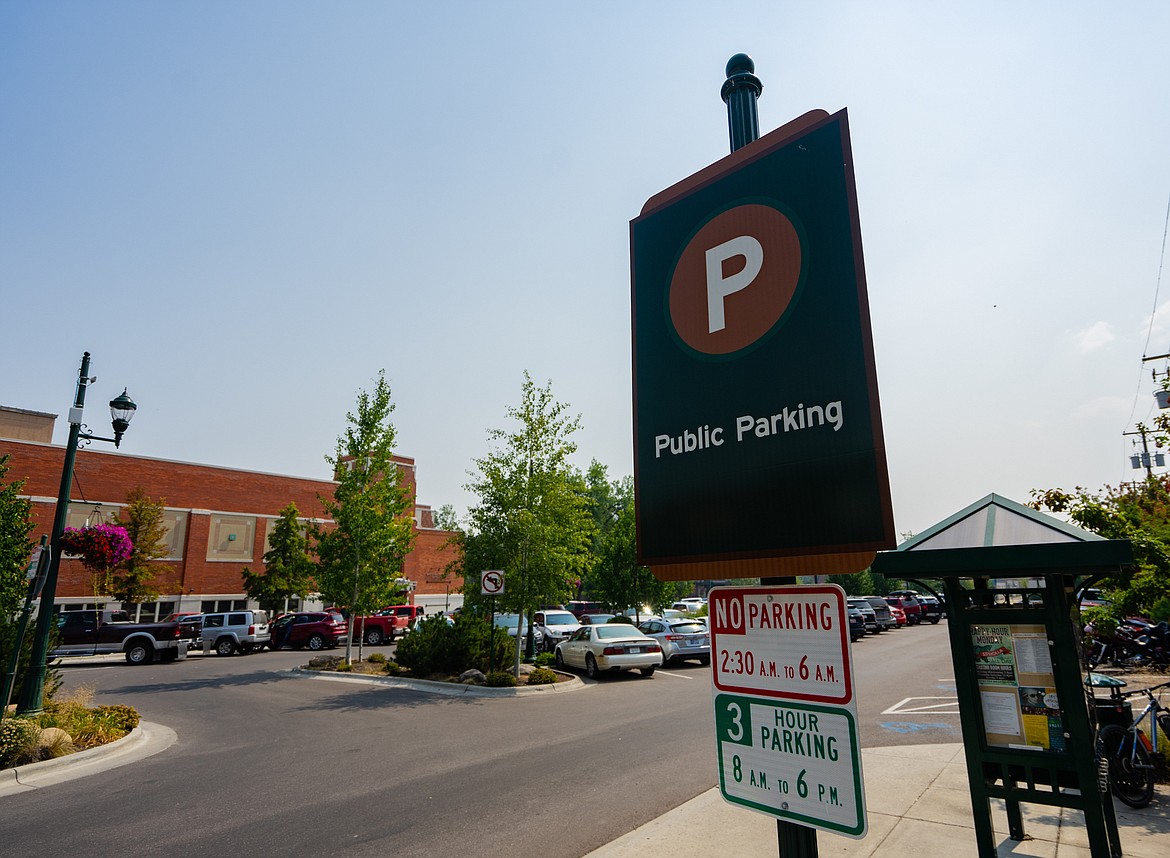City begins look at parking in preparation for full plan
Does Whitefish have enough parking spaces to meet the needs of the town? Are those parking spaces easy for visitors to find?
Those are among many questions the city of Whitefish is looking to eventually answer through what it is expected to be a full parking study for the city.
City Long Range Planner Hilary Lindh said there are two main issues the city seems to be facing when it comes to parking.
“The new commercial development downtown has created substantial new demand for parking, but is exempt from meeting parking requirements, which appears to be contributing to the problem,” she said. “There’s also a difficulty in parking downtown during the peak summer season and special events.”
Updating the city’s parking plan for downtown was approved by City Council on its 2018 list of goals. Planning staff presented on overview of the issue recently during a Council work session.
This month city staff is working on a parking supply inventory to gather information that will likely be applied to a full parking study and plan created by an outside consultant next year.
Lindh said the plan would look at the unique characteristics of Whitefish and recommend longterm parking management strategies while considering funding mechanisms to create more parking.
Planning Director Dave Taylor said city staff can begin the work, but it will be necessary to hire a consultant to get those recommendations for how to address issues. Hiring a parking consultant is estimated at a cost of $20,000 to $30,000, which has been budgeted for in fiscal year 2019 by spending tax increment finance funds.
“We’re not parking experts,” Taylor said of city planning staff. “We also have a lot of other projects we’re working on. Staff can gather data and that’s going to have cost savings, but we do need to pull in people who do this professionally.”
Mayor John Muhlfeld said his initial impression was that the city could use some of the same practices it has in the past to construct additional parking — like creating special improvement districts to pay for parking — but it’s time the city looked for other solutions.
“We need to come at the problem from some different angles,” he said.
Whitefish has a special improvement district that went into effect in 2017 and assesses business owners a fee to pay for costs associated with the City Hall parking garage. A separate district previously assessed businesses to pay for two surface parking lots, but that ended in 2015.
The city’s 2008 parking study showed parking occupancy at 1,945 spaces downtown with 1,100 spaces available for general public visitor parking. The study showed at that time that during peak demand in July and August the city had a 17 space deficit at peak hour in localized areas.
The study, however, was completed prior to the redevelopment of Central Avenue, the surface lot at Spokane Avenue and Second Street and the parking garage, as well as other significant development, Lindh noted.
The city’s downtown master plan says that city should provide public parking that supports downtown retail and commercial business, along with providing an adequate number of parking spaces to meet future demands for employees and visitors. It also notes that it’s important to provide pedestrian-friendly and active downtown with edge-to-edge retail frontage.
Lindh said the trend in parking across the country is to actually reduce or eliminate parking requirements because parking is not a great use of land in a downtown area, where land is more valuable. In addition, land not used for parking spaces can be used for creating more units or improvements that frees up resources for small businesses.
“We really have to identify the problem,” she said. “Is it in localized areas or is it the perception that there is a problem? Maybe people just need better information about where to park. Adding more parking is really just a short-term solution and we need to take a more comprehensive approach.”
She also noted that a parking management plan should look at the city as a whole and not just focus on the downtown area.
Lindh listed a few of the strategies other resort towns have considered: improved enforcement, improve signage for drivers to find available parking, creating other transit options, managing employee parking so they aren’t using retail spaces, reconfiguring parking lots to be more efficient, pay parking during peak demand, accommodating parking for RVs and residential permit parking programs.
“Any recommendations in a parking management plan would support decisions we may look to make in the future,” Lindh said.
A parking management plan, the city says, would look at the inventory, provide a suite of longterm management strategies, evaluate potential revenue generators to fund public parking and identify the next steps.
Under city code, the WB-3 business zoning district downtown for non-residential uses is exempt from parking and loading requirements.


